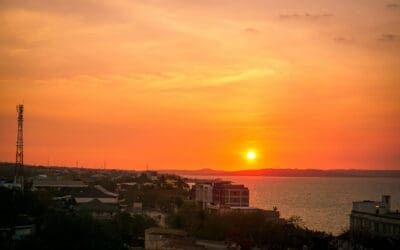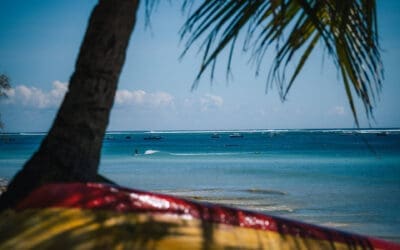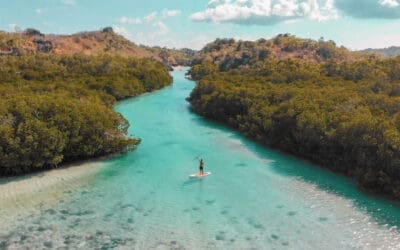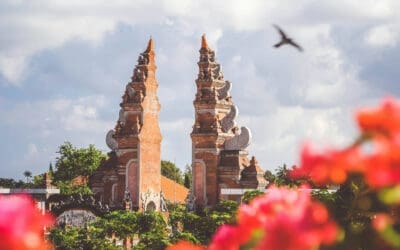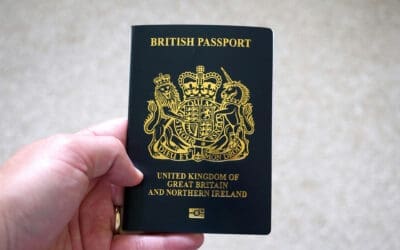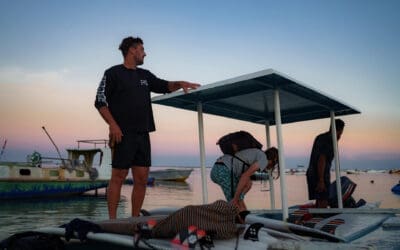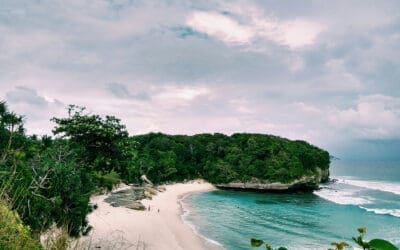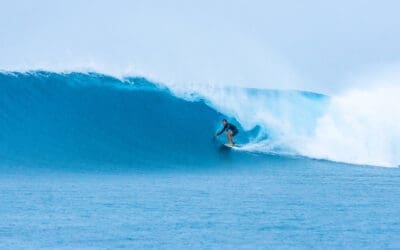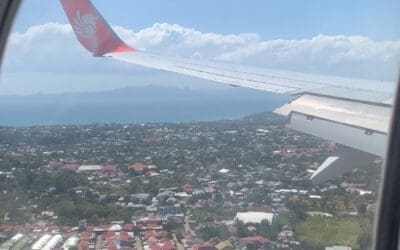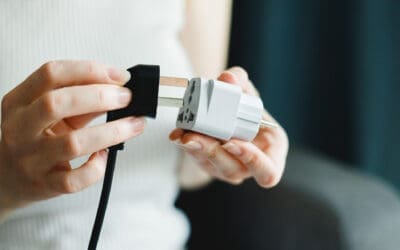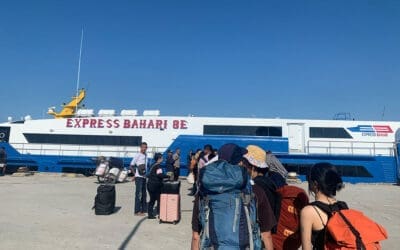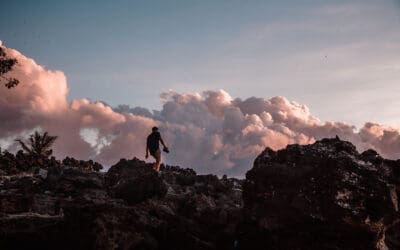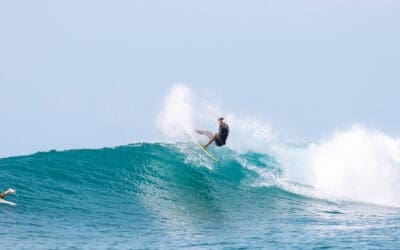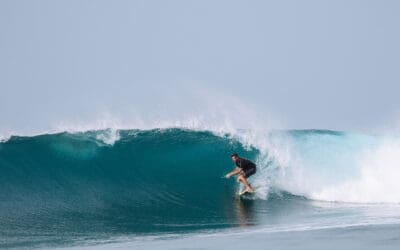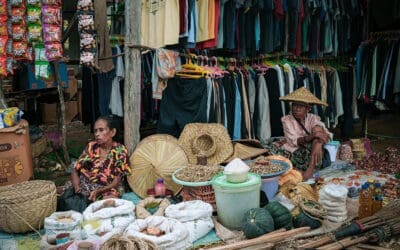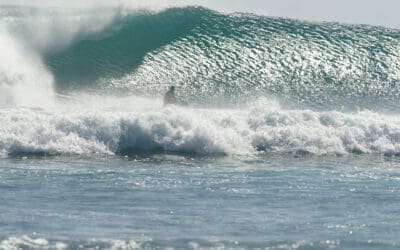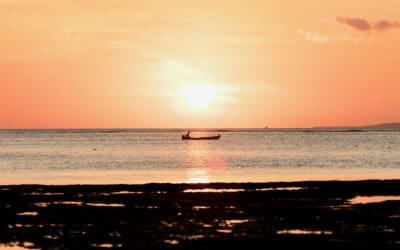While islands like Bali, Lombok, Gili are now highly developed with airports, roads, transport networks, GoJeks, Grabs, hospitals, shopping malls, a seemingly endlessly diverse choice of restaurants and everything you could pretty much desire. The vast majority of Indonesias, 17,000 islands are remote, hard to reach and far from the common tourist paths.
With lush rainforests, pristine beaches, and cultures steeped in tradition, these far-flung regions offer experiences you won’t find in the more popular tourist destinations.
But, traveling off the beaten path comes with unique challenges. From navigating limited infrastructure to understanding local customs, being well-prepared is essential to making the most of your adventure.
So to help you plan your trip to some of Indonesias more remote islands, here’s some helpful information and tips to help you explore Indonesia’s hidden gems safely and respectfully, while immersing yourself fully in the natural beauty and rich culture that await.
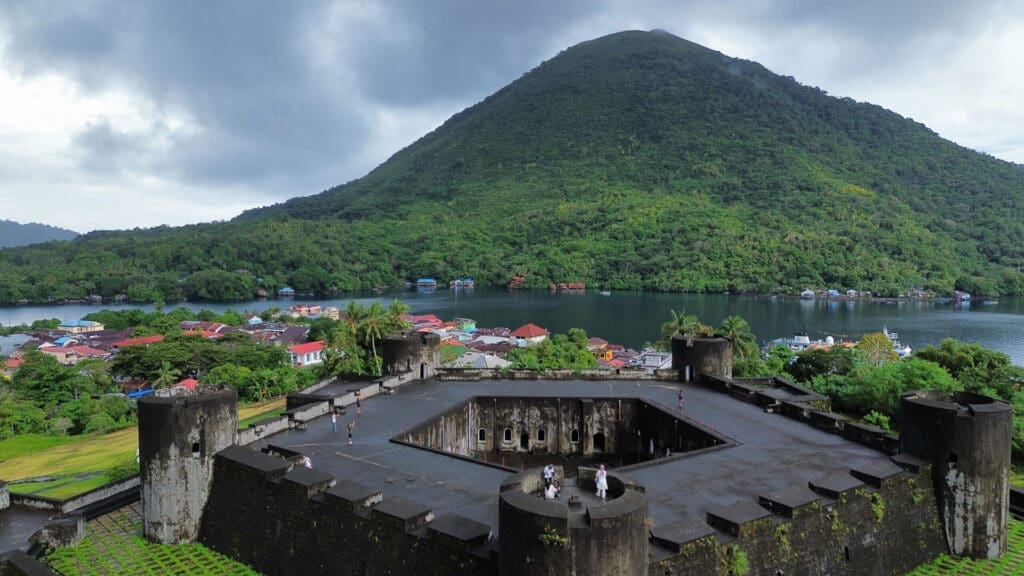
1. Research Your Destination
Your trip should start at home from the comfort of your couch, or at while you are at work in which case, should you even be reading this? Hey, we won’t tell.
It is amazing what information exists online today, and while more old school types will moan about how nobody told them anything back in 1982, today we have the luxury of Google Search.
Here are some things to start with.
- Learn About Local Cultures: Indonesia is home to a diverse range of ethnic groups and cultures. Familiarize yourself with the customs and traditions of the areas you plan to visit to show respect and follow local etiquette. You will be amazed by the opportunities that present themselves when you show you are deeply respectful of the local culture and traditions.
- Understand Transportation Options: Remote areas may have limited transport options. Research local transport methods, including ferries, flights, and public transport. The more you know ahead of time, the less time you waste sat waiting for the next days ferry.
- Find Local Guides: One of the best ways to experience remote locations is with a local guide. But this doesn’t have to be in the form of a physical tour guide when you arrive. Do some online digging and you will find local online guides like Rote Guide, for many islands in Indonesia that share loads of helpful information.
2. Plan Ahead
With your research done, it’s time to start planning. Planning ahead helps avoid inconveniences on your journey.
- Book Accommodations Early: In less-touristed areas, accommodation options may be very limited. For example Kepa Island (Pulau Kepa) has 2 places with a few bungalows for accommodation, so it’s not hard for it to be fully booked. Reserve your accommodations in advance, especially during peak travel seasons. It’s also not uncommon for seemingly large hotels to be fully booked in some of the more busy transit cities like Kupang.
- Check Accessibility and Schedules: Some remote islands may have limited access due to weather conditions or schedules that change with the seasons. Stay updated on local weather and travel advisories and have a backup in place incase you are unable to travel on planned dates. In some areas, ferries will not run at certain times of the year due to weather, so always check the schedules.
3. Pack Smart
You are going to want to swap out that 30kg wheeled suitcase for something more practical. As you get closer to Indonesias remote areas, the planes and ferries get smaller and 4 wheels normally become 2. The supermarkets become less stoked and many of the things you expect at home, do not exist. So smart packing can really make or break your time.
- Bring Essential Supplies: Pack essentials like medications, a first aid kit, insect repellent and sunscreen. In remote areas, these items may not be readily available or very expensive if they are.
- Consider Your Clothing: Lightweight, breathable clothing is ideal for Indonesia’s tropical climate. Additionally, bring a light jacket or sweater for cooler evenings or higher altitudes. Remember to pack something so you can dress modestly for when you visit towns or religious sites (See tip 5).
- Pack a Refillable Water Bottle: You will drink a lot of water, and one thing Indonesia needs less of is plastic bottles.
4. Stay Connected
There is a definite correlation in Indonesia between the degree of remoteness and the number of signal bars you will get on your phone. In a lot of places there is simply no connection. And while there are times that is really nice, ideally we want to limit this.
- Download Offline Maps: Before heading to remote areas, download offline maps and guides to help you navigate without relying on cell service.
- Get a Local SIM Card: If you plan to stay connected, consider purchasing a local SIM card for your phone. This can help you access maps, translation apps, and local information. Telkomsel is a great option for a lot of Indonesia.
- Get an eSIM: eSims like Holafly are awesome for traveling, especially for the time between arriving and getting the best local sims. Purchase it at home, and have mobile internet the moment you step off the plane in Indonesia. It’s important to note though that if there is no local cell coverage, Holafly will also not work as it needs to piggy back of a local network.
- Starlink: If being online is really important, like it is for us, Starlink Mini is a great option. It’s small enough to pack with your laptop, and can even be powered from a portable battery. Meaning you can literally fire it up on a beach in the middle of nowhere and be online. When you are at accomodation it can be plugged into a mains supply for unlimited use.
5. Respect Local Etiquette
We cannot stress this enough. Be respectful
Smile, be polite, say thank you (Terima Kasih). Don’t speed around topless on your motorbike. Respect local customs, honor traditions, and be grateful you are there. We are guests in their homes. Indonesians will open their heart and home to you if you show deep respect and earn their trust, showing you a whole new side of Indonesia and giving you experiences that are totally unique.
Here are some tips for being respectful in Indonesia.
- Dress Modestly: In many remote areas, traditional dress is still common. Dress modestly, especially when visiting villages and cultural sites.
- Ask for Permission: When taking photos of locals or their homes, always ask for permission first. This shows respect for their privacy and culture.
- Avoid using your left hand: Touching someone or pointing at something especially people with your left hand should be avoided. It is considered dirty as it’s the hand used for toilet related tasks.
- Don’t Show the Soles of Your Feet: And certainly don’t touch someone with your barefeet (unless they asked for it I guess).
- Smile: If you are traveling through areas that do not see many tourists, you are going to attract attention, kids will run after you shouting “BULE! BULE!”, and adults will want to talk and ask questions, regardless of the language barriers. Indonesians are incredibly friendly and curious, keen to meet foreigners. A big smile and kind answers will take you a long way.

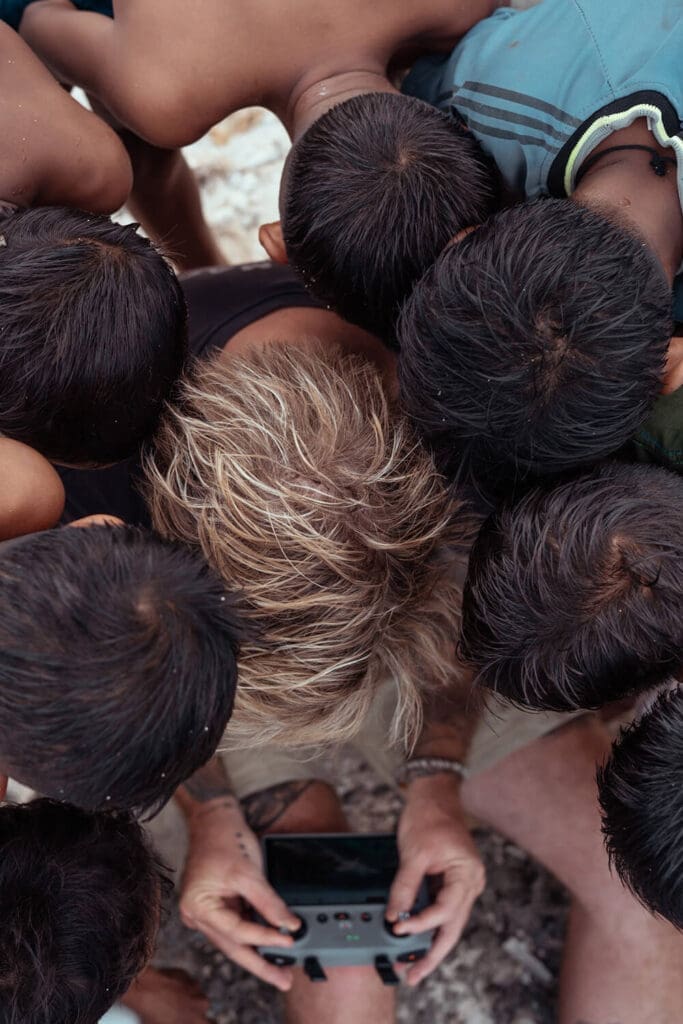
6. Embrace Flexibility
Spend any time traveling around remote Indonesia and you will without doubt run into delays. Ferries and flights will be late without explanation, and sometimes just cancelled until tomorrow. Simple tasks might take days to complete.
Flexibility and patience are key.
- Be Prepared for Delays: In remote areas, transportation schedules may not always be reliable. Allow for extra time in your itinerary and embrace spontaneity.
- Be Patient: It kind of follows on from the above. Being the foreigners causing a scene at the airport check-in for a delayed flight is not what you want to be seen as. But patience goes for everything else too, whether it’s a driver showing up late for your pickup, or immigration taking a long time.
- Stay Open to New Experiences: Interacting with locals and joining in their customs will really add authenticity your travel experience. Be open to trying new foods, participating in traditional activities, and learning local languages.
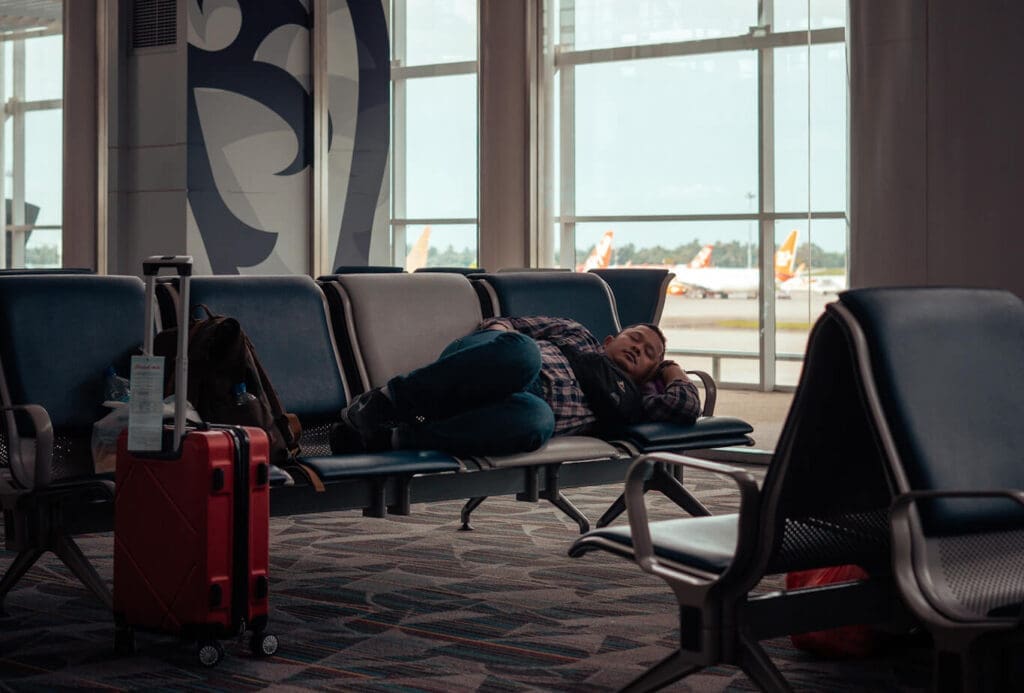
7. Prioritize Safety
Sometimes things can go wrong. When it does it pays to be prepared and informed.
- Stay Informed About Health Precautions: Research any vaccinations or medications recommended for the areas you’ll visit. Locate hospitals, clinics and while we don’t want to think too much about it, have an emergency plan in place to get to safety if things go really wrong.
- Carry a First Aid Kit: In some areas you can be more than a days travel to a hospital. Carry a good first aid kit and any personal medications to cover you for the time it takes to get to a hospital or clinic.
- Trust Your Instincts: If something doesn’t feel right, trust your gut. Stay aware of your surroundings, especially in less populated areas. In general Indonesia is a very safe country, but some of the remote areas still experience problems with tribes and foreigners.
8. Practice Responsible Tourism
Many of these islands are home to fragile ecosystems, including endangered marine life, pristine coral reefs, and rainforests with rare biodiversity. Without mindful tourism practices, these natural treasures face threats like pollution, habitat destruction, and unsustainable resource use, which can have long-term impacts on the environment and local communities.
Equally important is respecting the local cultures and traditions that define these remote islands. Many communities in these regions maintain lifestyles deeply connected to their land, traditional beliefs, and customs.
- Support Local Businesses: Eat at local restaurants, stay in locally-owned accommodations, and purchase handmade crafts. This supports the local economy and helps preserve cultural heritage.
- Respect Nature: Be mindful of your impact on the environment. Practice Leave No Trace principles by disposing of waste properly and avoiding damaging natural sites.
- DO NOT LITTER and Avoid Plastics: While you will likely see trash in piles being burnt as you travel remote Indonesia, it’s really very important that as a visitor you do not add to this. Remote communities are very resourceful and they are able to manage their own waste, but as travelers arrive, hotels and resorts produce more trash that put a heavy toll on local systems. Bring reusable water bottles and try to leave nothing behind.
9. Learn Basic Bahasa Indonesia
Many people in these regions may not speak English, and even a few phrases in Bahasa can make communication smoother, helping you navigate daily interactions, ask for directions, and understand local customs.
It shows respect for the culture and often leads to warmer, more positive interactions with locals, who appreciate the effort you’re making to connect in their language.
Here are some phrases to get you started
- Hello, how are you? – Halo, apa kabar?
- Thank you very much. – Terima kasih banyak.
- How much does this cost? – Berapa harganya?
- Can you help me? – Bisa bantu saya?
- Where is the restroom? – Di mana kamar mandi?
- Excuse me / Sorry. – Maaf.
- I don’t understand. – Saya tidak mengerti.
- Do you have food with no chili? – Ada makanan tanpa cabai?
- I am a tourist. – Saya turis.
- Is it safe here? – Apakah aman di sini?
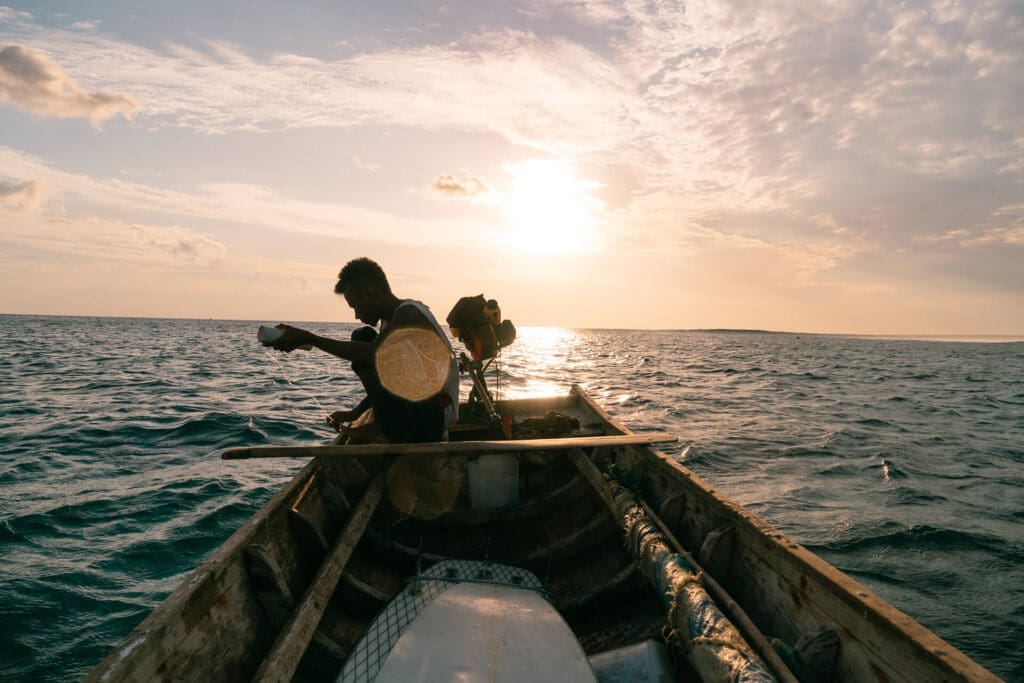
10. Stay Engaged with Local Communities
Engaging with the local community opens doors to authentic, memorable experiences and helps foster a positive relationship between visitors and residents. By connecting with local people, you gain insights into cultural practices, traditional beliefs, and regional knowledge that would otherwise be inaccessible. This engagement can lead to unique activities, such as learning about traditional crafts, participating in local ceremonies, or exploring hidden spots that only residents know about.
Moreover, being actively involved with the community helps support the local economy and encourages sustainable tourism practices. When visitors show respect for the customs and rhythms of life in these areas, they’re more likely to experience a warm welcome and create lasting memories that reflect the true spirit of Indonesia. Engaging with locals also helps bridge cultural gaps, allowing for meaningful exchanges and friendships that enrich the journey and contribute to a more inclusive, impactful travel experience.
- Participate in Cultural Experiences: Engage with local customs, attend festivals, and join community activities to gain a deeper understanding of the culture.
- Listen and Share Stories: Take time to listen to local stories and share your own experiences. This creates meaningful connections and fosters mutual understanding.
Exploring the remote parts of Indonesia can be a truly life changing experience, that allows you to connect with nature and local cultures in profound ways. Following the these tips can help make sure you have the best experiences, stay safe, and make lifelong friends from all over Indonesia.


